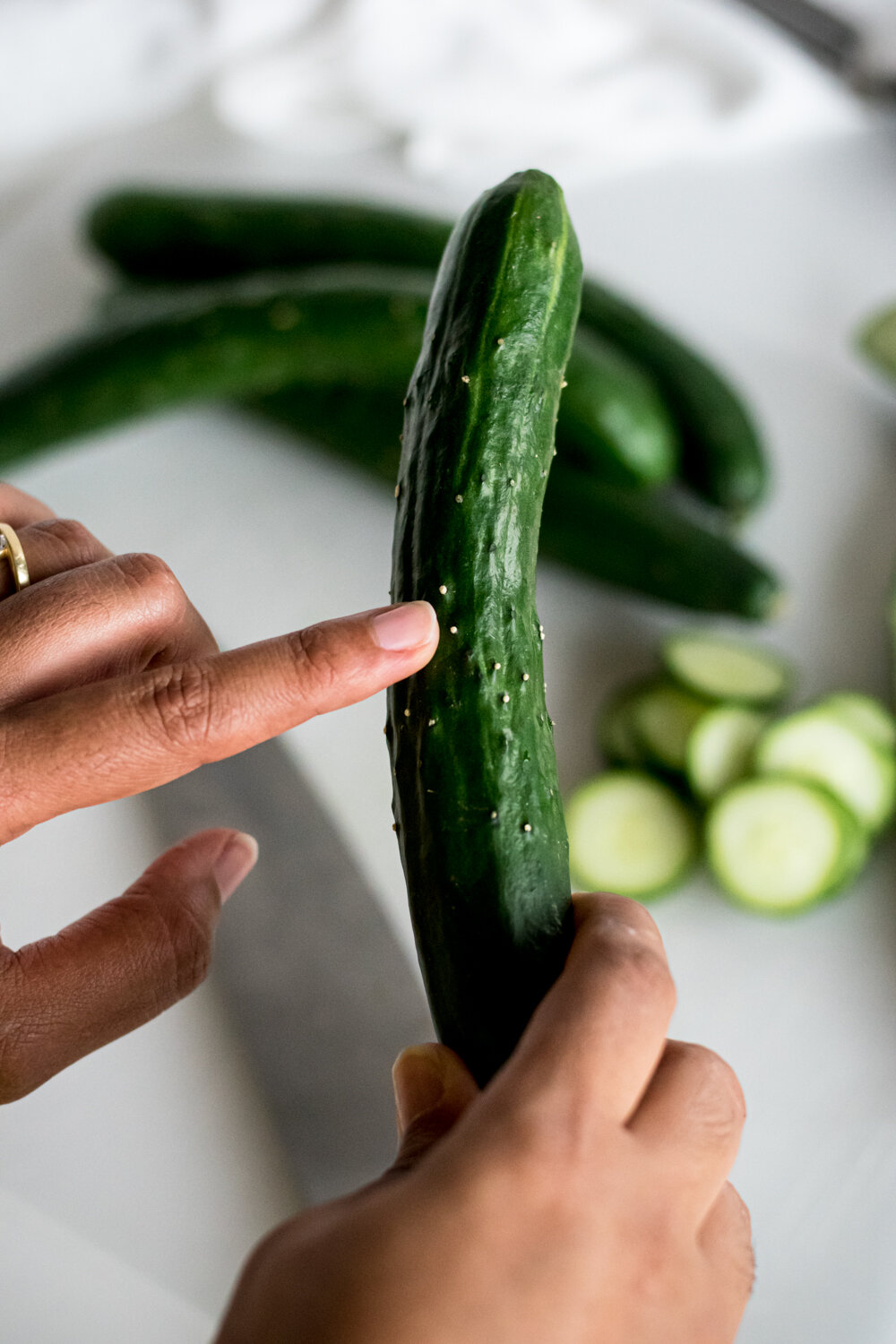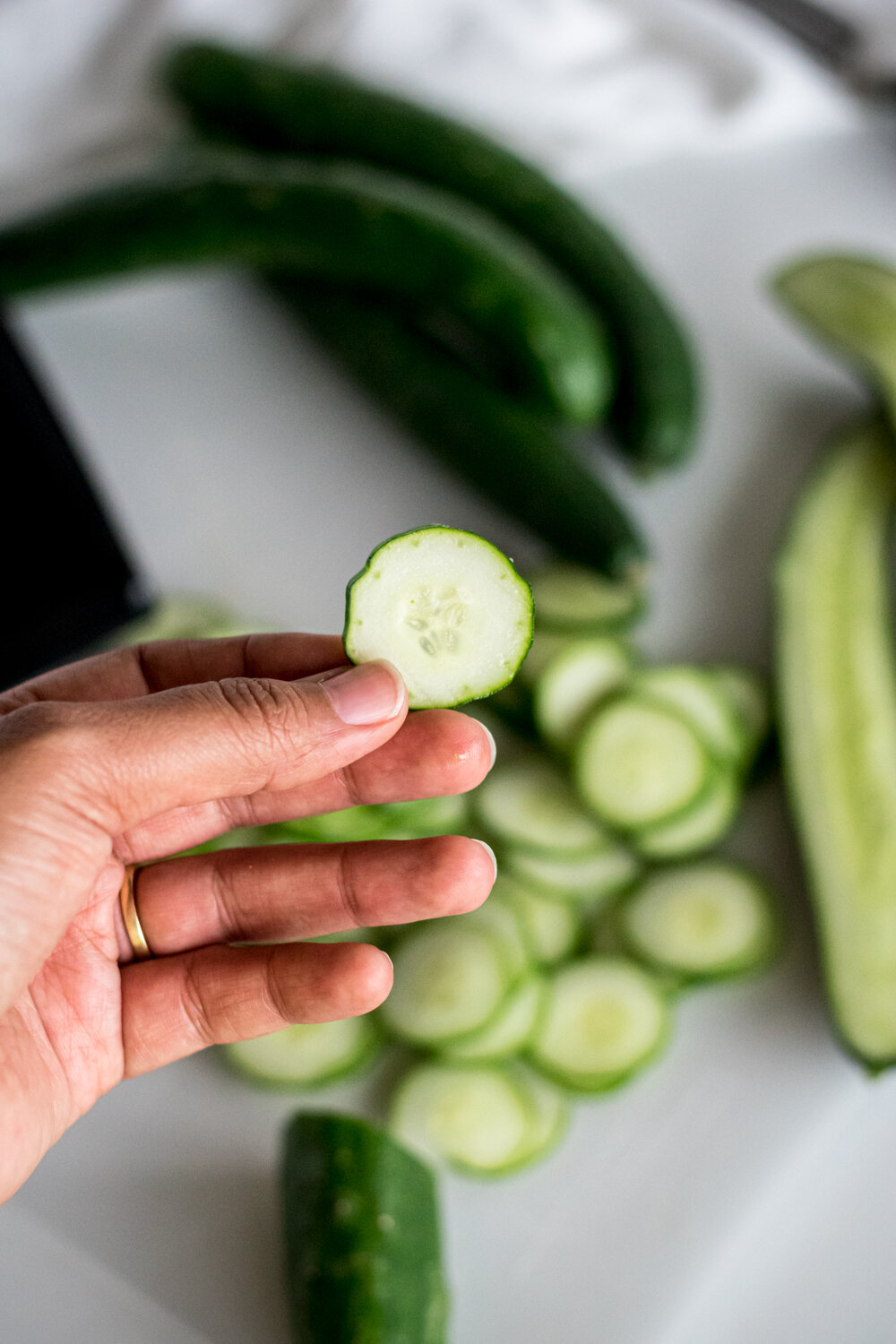The Japanese Cucumber #ACAinJapan
As you may know, I currently reside in Okinawa Prefecture, Japan and it’s such an amazing place to live. Even more so for people like myself who love food to the core! One of my main goals upon arriving here is to delve deep into Japanese food culture, which has been really fun and challenging at the same time. So, I’ve decided to create a once a month series of posts here on the blog that features Japanese food, cooking tools, and culinary techniques!
Today we begin with one of Japan’s most common vegetables that’s used on a daily basis and that is the Japanese Cucumber! It is known as “Kyuri” in Nihongo and I have to say that this has become my favorite type of cucumber! Like other cucumber varieties, the Japanese cucumber has a light and crisp taste. However, this cucumber is not bitter and it actually has a slight sweetness to it when you take a bite.
The anatomy of the Japanese Cucumber is small and slender with little knobs running down the body. They average about 8in/20.32cm in length and 1in/2.54cm in width. The skin is edible with a deep green hue and most times it’s left on for most of its culinary preparations. It’s rich in vitamin C and K along with potassium, magnesium, and manganese. When you cut into the cucumber, the flesh is firm and crunchy which is reminiscent of a thinly sliced apple. The color is light green in the center and there’s a row of undeveloped seeds that run down the middle of the body. The texture of the seeds is minimal, so Japanese Cucumbers are considered seedless. It’s also on the drier side compared to other cucumbers that can be very watery.
This cucumber is used in a wide variety of delicious Japanese dishes and it’s usually eaten raw. Some that come to mind are sushi rolls, bento, onigirazu (rice ball sandwich), sando (sandwiches), seafood donburi (rice bowls), and most commonly sunomono, which is a pickled Japanese cucumber salad. It’s also enjoyed as a snack with a miso dip which is one of my favorite things to order when we have grilled oysters at The Oyster Shack in Okinawa. So delicious!
If you want to make dishes that feature Japanese Cucumbers but you don’t have access to them, you can use small Persian Cucumbers in their place. However, if you don’t have access to the Persian variety, the long English (Hothouse) Cucumber will be the next in line. The Persian variety is smaller in length (average 5in/12.7cm) and usually sold in a set of 4 or 5 in a package. The English variety is the largest of these types of cucumbers with an average length of 14in/35.56cm. They are usually sold individually and wrapped in plastic. Both of these varieties are seedless and crunchy like the Japanese cucumber so you’ll be just fine when you need a substitute for your Japanese dishes.
I hope you enjoyed today’s Japanese inspired food blog post! If there’s anything you want to learn about and if you have experience with Japanese dishes, feel free to leave a comment below or send me an email. Take care and stay tuned for a delicious recipe featuring the Japanese Cucumber!
-Shari :)
Photography & Styling by A Certain Aesthetic















